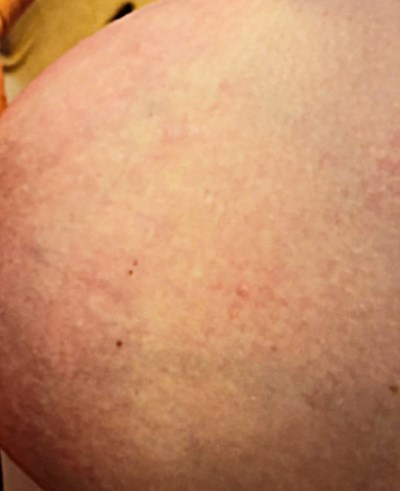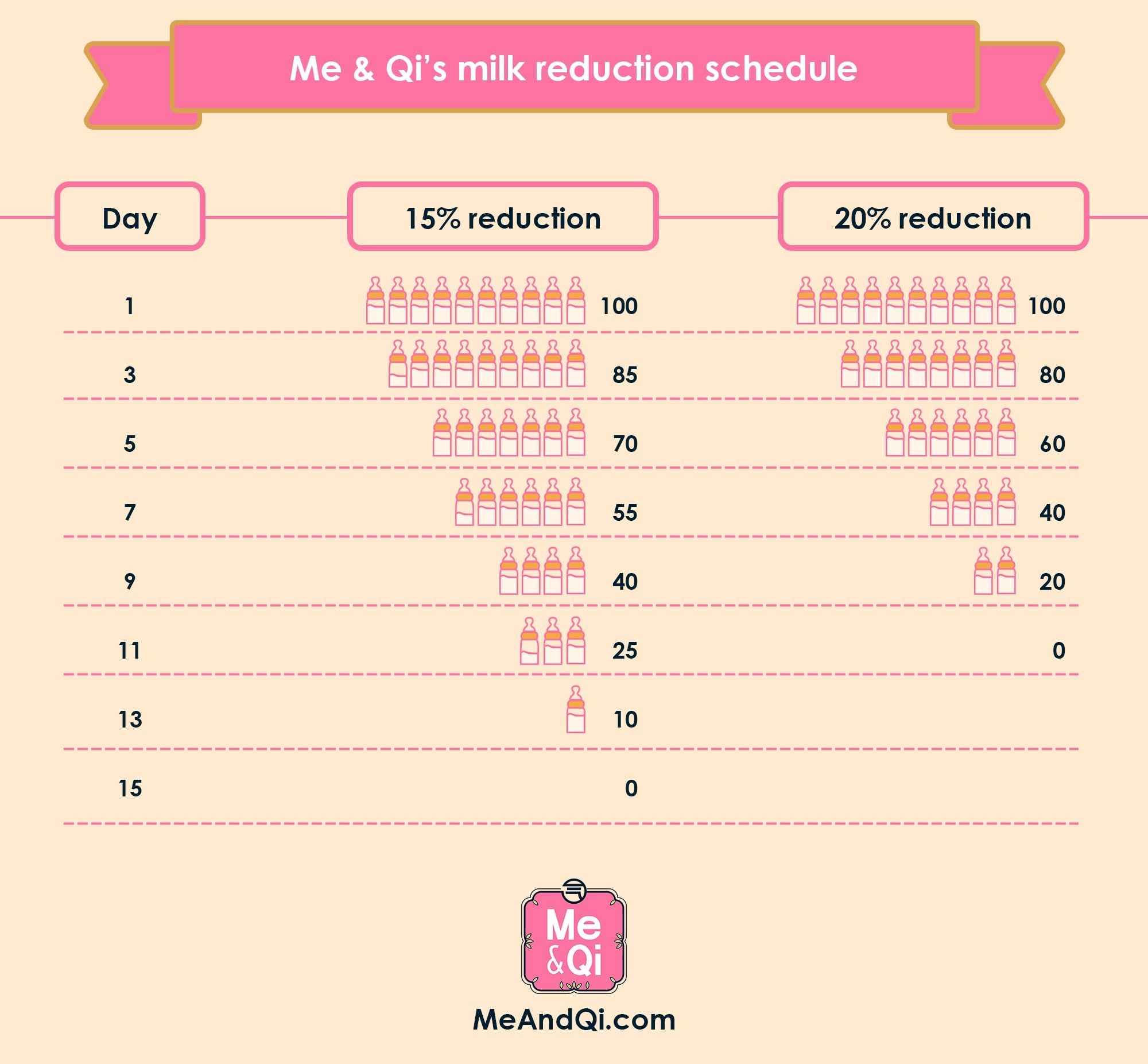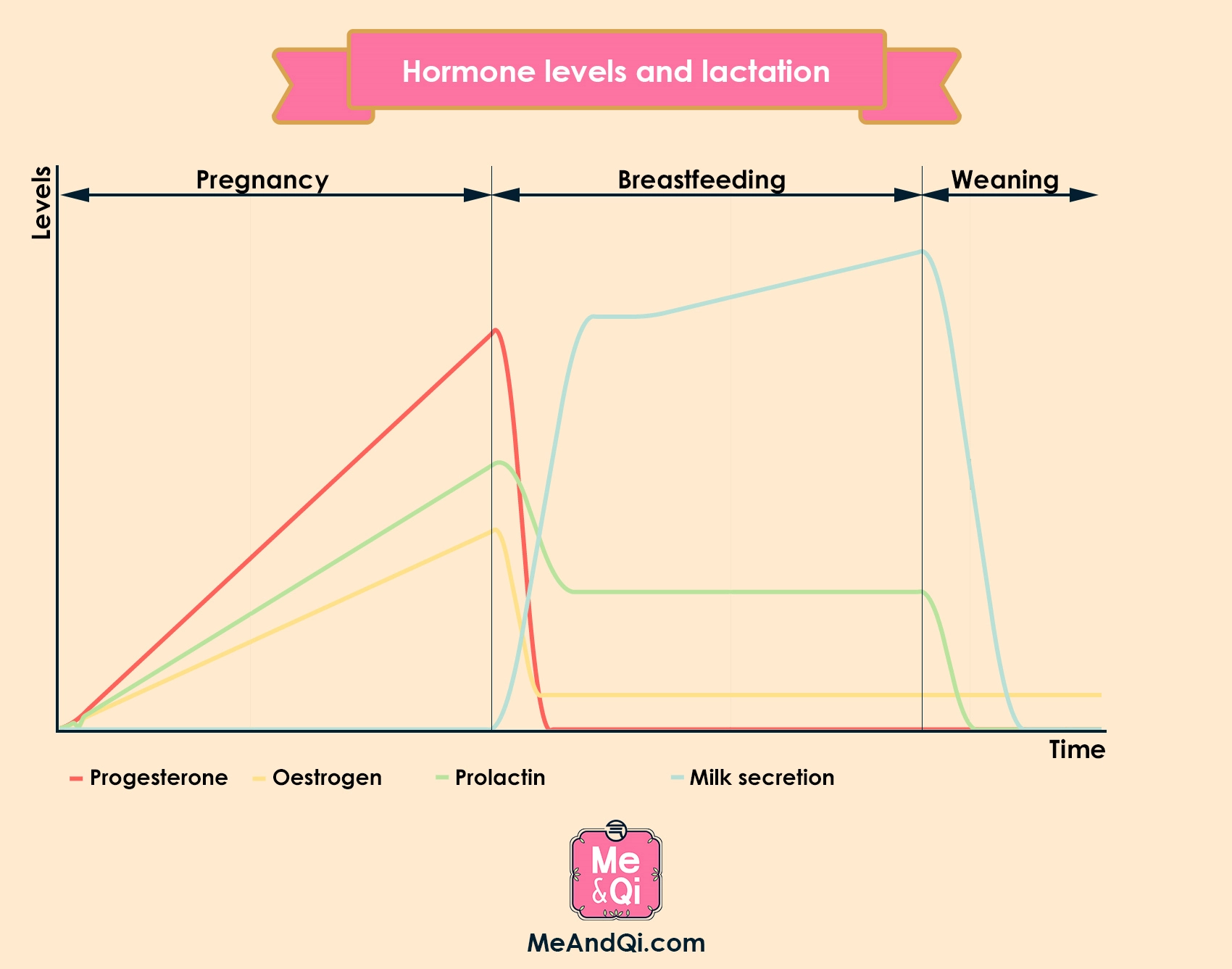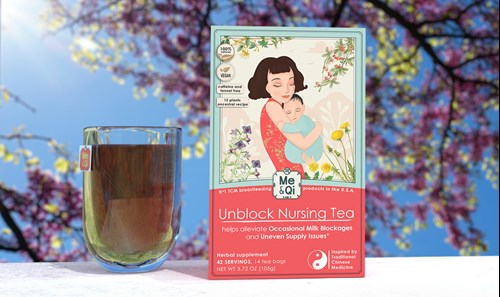Contents
- What Are the Signs and Symptoms of Clogged Milk Ducts?
- What Causes Clogged Milk Ducts While Breastfeeding?
- A Sudden Change Of Breastfeeding Schedule Or Routine
- Change Of Daily Habits, Activities, And Environments
- Accumulated Toxic-Heat In The Breasts:
- What Causes Recurrent Clogged Ducts? Especially These In Same Spot?
- What Causes Clogged Milk Ducts During Pregnancy?
- Causes of Clogged Milk Ducts In Not-Pregnant And Not-Breastfeeding Women?
- How To Clear A Clogged Milk Duct At Home?
- Unblock Nursing Tea To Prevent and Clear Clogged Milk Ducts
What Are the Signs and Symptoms of Clogged Milk Ducts?

A clogged milk duct is a condition when a blockage causes the milk duct to stop draining or in a very limited amount. When the trapped breast milk accumulates, the pressure in the duct goes up and leads to localized sharp and shooting pain or even the formation of hard lumps and nodules. Other signs and symptoms of clogged milk ducts include:
- Red and swelling breasts that feels hot to the touch.
- Breast engorgement
- Breast that feels full, hard, heavy, and distended
- Feelings of remaining milk plugging the breast.
- Sudden decrease of milk supply on one or both breasts.
- Unequal milk supply between the two breasts
- It gets harder for the baby or pumping machine to empty the breast.
- Thickened breast milk
For more information on the signs and symptoms of a clogged milk duct, refer to this in-depth article on the subject.
In some severe cases, if a clogged milk duct isn't taken care of, it is possible that it turns into a bacterial infection called mastitis or even abscess. The best way to stop this common nursing problem is to know the potential underlying causes as well as the treatments.
What Causes Clogged Milk Ducts While Breastfeeding?
According to lactation experts, the underlying causes of clogged milk ducts are typically somethings that stops the breast from draining. This can be caused by several factors, including sudden changes in breastfeeding schedule and environment as well as accumulated Toxic-Heat. We will discuss the details below:
A Sudden Change Of Breastfeeding Schedule Or Routine
- Sudden Increase Of Milk Supply
There are times when the mother wants to have more milk by trying more nutritious foods, pumping more often, or taking lactation supplements. This sudden increase in milk supply can cause clogged milk ducts because the current ducts cannot handle an extra amount of milk, causing the ducts to become blocked or congested.
- Weaning Too Fast
Weaning too fast definitely increases the risk of clogged milk ducts, as the body doesn’t have time to adapt. When a mother is planning to wean her baby, it is generally recommended that she gradually decrease the breast milk volume over a period.
For example, according to the chart below, if she wants to stop breastfeeding in two weeks, she should reduce the daily volume by 15%. Here is a detailed article on how to apply the ‘gradual weaning’ method.

Change Of Daily Habits, Activities, And Environments
- Improper Latching And Feeding Position
If the baby has difficulty latching on to the breast, he/she may not be able to get as much milk. When breast milk is not drained effectively, it can remain in the ducts and cause blockages. This makes the mother more likely to get breast engorgement, clogged milk ducts, or even mastitis.
- Change Of Environment
A change in environment, such as traveling to a new location or moving to a new home, can disrupt a breastfeeding schedule and result in insufficient emptying of the breast. This can happen because the usual routine is disrupted, and the baby does not breastfeed as frequently as usual
Additionally, the stress of traveling or moving can also disrupt milk production, increasing the risk of clogged milk ducts.
- Tight Bra or Clothes
Sometimes, a tight bra with an underwire can put excessive pressure on breast tissue and cause clogged milk ducts. Also, pressure on the breasts can come from tight clothes, the straps of an infant carrier, or a heavy diaper bag.
- Appearing Of Blebs Or Blisters
A milk bleb or blister is a blockage in a nipple pore. This can occur due to a variety of factors, such as thick breast milk, scabs on the nipple, or the accumulation of dry pus or blood. A thin layer of skin can also grow on top of a nipple pore and block it.
It could also happen due to cloth or bra friction or bacterial infection, preventing breast milk from flowing freely and resulting in a clogged milk duct.
- Lying On Your Stomach
When you sleep on your stomach, you put pressure on your milk ducts which slows down the flow of the milk. This makes you more likely to have blocked milk ducts.
- Exercise
Vigorous or intense upper body exercise can lead to clogged ducts and may also reduce milk production.
- Prolonged Use Of Nipple Shield
Nipple shields can be useful in certain situations, such as when the nipple is chapped, inverted, or upside down. However, it is not recommended to use them for an extended period of time.
It is because they prevent the baby from getting close to the breast, making it more difficult for he/she to extract milk from the breast. This increases the risk of clogged milk ducts.
Accumulated Toxic-Heat In The Breasts:
On top of the above two main categories of causes, Traditional Chinese Medicine (TCM) has another perspective on how clogged milk happens. According to it, the accumulation of Toxic Heat in the breast also plays a role. In this context, Toxic refers to bacteria and Heat refers to inflammation. It happens mainly due to the following two factors:
- Heavy and Fat Diet
Long term consumption of rich and fat foods can increase the fat content of breast milk and lead to clogged ducts. Examples of such foods include pork, lamb, chicken, cheese, butter, chocolate, cakes, ice cream, etc.
In addition, fat and heavy diet can lead to the accumulation of Toxic Heat in the stomach. This Toxic Heat can then be transmitted to the breasts through the Stomach Channel, causing inflammation and blockages in the breast ducts.
On the other hand, insufficient water intake can increase the risk of clogged milk ducts as well. This is because approximately 90% of breast milk is water, and a lack of water in the body can lead to a decrease in milk supply and the development of clogged ducts.
- Emotional Stress
According to TCM, when a mother experiences emotional stress, such as anger, anxiety, or depression, her Qi (energy in Western terms) becomes stagnant, resulting in accumulation of the Toxic Heat in the breasts. This is a common cause of many postpartum issues, such as clogged milk ducts or low milk supply.
This theory is also supported by Western research, which has found that when a nursing mother experiences postpartum depression, her body reduces the production of oxytocin, a hormone that plays a role in the milk ejection reflex that helps release milk from the breasts. A decrease in oxytocin can lead to a decrease in milk flow and an increased risk of clogged ducts.
What Causes Recurrent Clogged Ducts? Especially These In Same Spot?
One-off clogged milk ducts are often the result of a sudden change, such as a change in breastfeeding schedule, habits, position, or environment. In many cases, the blockage may resolve on its own as the body adjusts to the new routines.
However, recurrent clogged ducts are more likely to be caused by longer-term issues, such as a high-fat diet or a consistently stressful environment. If the recurrent clogged ducts consistently occur in the same spot, it may be due to pressure from tight clothing or bras on that area, or improper latching or positioning during breastfeeding that prevents even emptying of the breast.
Some mothers may also be more prone to developing clogged milk ducts due to factors such as their prolactin hormone level, the size, and shape of their breasts, or the thickness of their milk.
If you experience recurrent clogged ducts, you may find it helpful to try Unblock Nursing Tea, which can help relieve existing clogged milk ducts and prevent future occurrences. So, in case of potential clogged milk ducts, you may use 1-2 teabags per day as a preventive measure. On the other hand, if you are already experiencing the symptoms of a clogged milk duct, you need to use 3 teabags per day to alleviate the symptoms.
What Causes Clogged Milk Ducts During Pregnancy?

Like breastfeeding mothers, pregnant women can sometimes suffer from clogged milk ducts as well. Some of them may experience small amounts of breast milk leakage or dripping, especially starting from the second trimester of pregnancy. It is due to the increased levels of prolactin, progesterone and estrogen in their bodies, as shown in the graph below. Although this is rare. These hormones stimulate the development of milk ducts and trigger milk production, which can cause swelling and congestion in the breast tissue, resulting in clogged milk ducts.
Causes of Clogged Milk Ducts In Not-Pregnant And Not-Breastfeeding Women?
Although most of the information about mastitis and plugged ducts on the internet pertains to breastfeeding mothers, it is possible for not-breastfeeding and not-pregnant women to also develop these conditions, even if they are not nursing a baby.
- Periductal mastitis
Periductal mastitis is a rare inflammatory condition that affects women who are not breastfeeding, typically during their childbearing years. Its symptoms are similar to those of lactation mastitis and can be caused by factors such as tears on the nipple skin, bacterial infections, smoking, and mammary fistulas.
- Mammary duct ectasia
It is a disorder that affects women between the ages of 45 and 55. It is characterized by the enlargement of a milk duct, which thickens the walls of the duct and fills it with thick, sticky fluid. This can lead to pain, tenderness, and periductal mastitis over time.
- Granulomatous Mastitis
It is a form of mastitis that can affect both females and males, although it is rarer in men. It is a chronic condition that causes symptoms such as breast swelling, a hard lump in the breast, and symptoms similar to breast cancer.
How To Clear A Clogged Milk Duct At Home?
When you already have a clogged milk duct, you can try certain treatment strategies and techniques to get ride of it. For example, if an incorrect latch causes the blockage, correcting it and ensuring that the baby is breastfeeding effectively can help. Regular breastfeeding can also help prevent clogged ducts.
There are several ways to alleviate pain caused by a clogged milk duct, including using cold compresses or frozen pads on the breast and trying natural remedies like cabbage leaves. Over-the-counter pain medications like ibuprofen or acetaminophen (Tylenol) can also be safely taken while breastfeeding, but it is always better to consult with a healthcare provider before using any medication.
In terms of mastitis, which is a breast bacterial infection, you may need to take antibiotics to clear it.
If you have a blister or bleb on your nipple, a healthcare provider or lactation specialist may recommend using a sterilized needle to remove the blockage or you may be able to pop the blister yourself. It is always important to follow proper techniques and hygiene when attempting to pop a blister.
For more information on preventing and treating clogged milk ducts, please refer to this article for detailed techniques.
Unblock Nursing Tea To Prevent and Clear Clogged Milk Ducts

To help clear a clogged milk duct, you may want to consider trying Unblock Nursing Tea, a blend of natural cooling herbs including licorice, goji berries, dandelion, honeysuckle, etc.
These herbs work together to address the root cause of clogged milk ducts: Toxic Heat in the breasts. The tea is also able to alleviate surface symptoms like sharp and shooting pain, breast itching, swelling, and redness.

